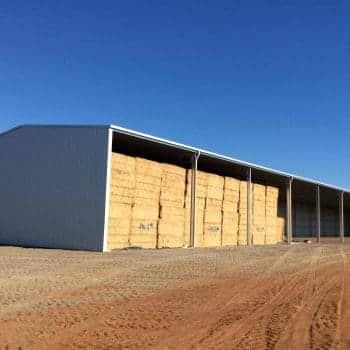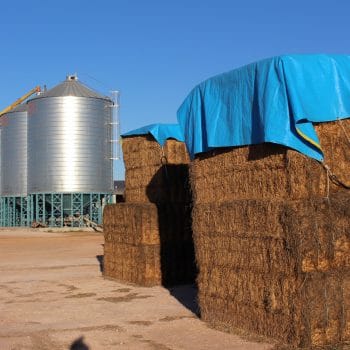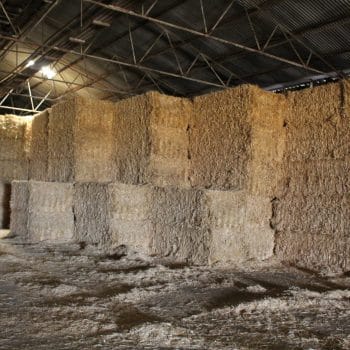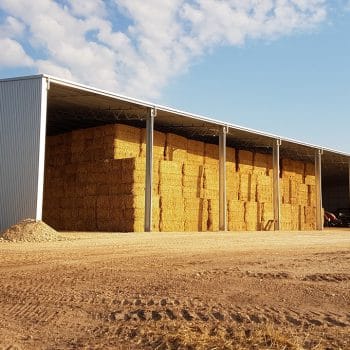After the big hay making season of 16/17 there is still a lot of hay that is yet to be sold (we’e got an AWESOME Advertising Service if you’ve got product you want to tell buyers about – Click here)
So how can you protect the quality of your hay so that it does not decrease and so that you don’t lose too much dry matter content? The answer is to have good hay storage!

- Shedded hay is best – If possible aim to stack hay in a shed. Sheds should have good gutters and drainage so that water does not gather around the bottom bales when it rains. Aim to have two to three sides on the shed to protect the stack from weather. Good airflow is also important to prevent moisture build up. The above shed images is from our mates at Action Steel Sheds! Don’t forget to check them out if you are wanting to get a shed.

- Have a storage pad – Whether your hay is being stored in a shed or outside it is important to have a raised storage pad to stack your hay on. This helps water drain away from your bottom bales during rain events which in turn decrease the chance of mould and rot forming in wet hay.

- Surface of storage – It is important to protect your bottom bales from contamination from dirt and rocks. Aim to have a good amount of residual hay on the ground before stacking your hay. Alternatively, use a plastic sheet or a tarp to protect the bottom bales.

- Stack shape – Especially if your hay is outside, avoid stacking your hay so that is has cliff edges which can potentially catch water. A solid block configuration is best so that water runs off properly. The above shed images is from our mates at Action Steel Sheds